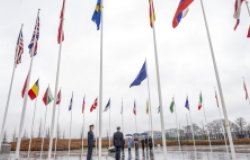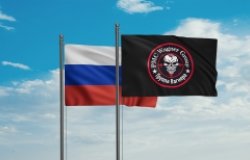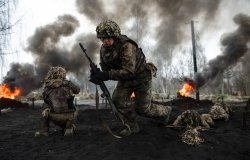212. Geopolitical and Geostrategic Aspects of War in the Former Yugoslavia: 1991-2000
The war in the former Yugoslavia was not a civil war as often asserted, but a war of aggression by the Serbian regime in Belgrade, led Slobodan Milosevic, with the aim of creating a "Greater Serbian" state. This Greater Serbia was to encompass all the Serbs that lived in the former Socialist Federal Republic of Yugoslavia (SFRY). Belgrade's regime provided strong political and propaganda support to the Serbs in Croatia and Bosnia to declare their regions autonomous. In both republics, the former Serbian-dominated Yugoslav People's Army (YPA) was used to arm the Serbian rebels and protect their self-declared autonomous areas. The YPA's attack against Slovenia in June 1991, and subsequent aggression against Croatia in July 1991, as well as against Bosnia in April 1992, were not spontaneous and improvised acts, but a part of a series of plans drawn up by the YPA's General Staff in late 1980s.
The roots of the war in the former Yugoslavia lay not only in ethnic animosities, important as they were, but also in Serbia's intent to expand its borders and create a geopolitically and geostrategically compact territory. This territory was to stretch from Serbia's and Montenegro's borders westward, to encompass Croatia's territory at the Virovitica- Karlovac-Karlobag line and as well as a major part of Bosnia and Herzegovina.
Croatia encompasses about 21,815 square miles. The country is physically fragmented into two parts: the Panonnian part in the east and the mountainous southern part. Croatia's horseshoe-like shape makes for long boundaries with its neighbors. The total length of its land border is about 1,305 miles. The longest border is with Bosnia, about 578 miles, while the borders with Serbia and Montenegro are 150 and 15 miles long, respectively.
Croatia's geostrategic position on land is very unfavorable due to its unusual shape and the length of its borders. In addition, a significant number of Serbs live in all of the border areas. Croatia's defense depth is also too shallow especially in the most populated areas in Slavonia and the industrial triangle of Karlovac-Zagreb-Sisak. The defense depth varies from about 48 to 58 miles.
The country's most vulnerable area is around the Karlovac Gate, where its width is a mere 30 miles. The Karlovac Gate is the main link between the Pannonian Basin and the mountainous Adriatic part of Croatia. In some places, Croatia's territory was reduced to only few miles in width as in case of the Dubrovnik hinterland.
The Serbian aim was to seize all areas in which Serbs lived. Thus, in addition to obtaining control of Eastern Slavonia and the Krajina, the Serbs aimed to also seize control of Western Slavonia, where they comprised only about 18 percent of the population. The ultimate Serbian objective was to amputate Croatia by seizing the territory up to the Virovitica-Karlovac- Karlobag line.
The war in Croatia started in July 1991. By the time of the cease-fire, signed in Sarajevo on January 3, 1992, Serbian rebels had captured Eastern Slavonia, Baranya, Western Slavonia, Banija, Kordun, eastern Lika and Knin Krajina. Serbian rebels had seized control of 5,791 square miles or 26.5 percent of Croatia's territory.
In geostrategic terms, Bosnia and Herzegovina occupy a central position in respect to the three republics of the former Yugoslavia - Croatia, Serbia, and Montenegro. Bosnia and Herzegovina link the two ends of the Croatian horseshoe - Slavonia and Dalmatia. For Bosnia, Croatia represents the exit from its isolation. For Croatia, Bosnia is the buffer against any Serbian encroachment. The key for control of Bosnia is to command its geostrategic core - Banja Luka-Tuzla-Bosanski Brod-Travnik-Kupres-Sarajevo-Mostar - which dominates the principal communications to the Sava River basins and to Dalmatia's coast.
Geopolitically, the problem of Bosnia was difficult to resolve for the Serbs. The Bosnians in the Podrinje region separated Serbs in northern and western Bosnia from Serbia proper. Serbs in the northeastern part of Bosnia were physically separated from Serbs in eastern Herzegovina. The Croats in the Bosnian Posavina region dominated key communication links between Bosnia and Croatia. They also dominated communication lines to Ploce and Neum. Bosniaks and Croats also dominated communication links along the Narenta Valley. By 1992, the Croats and the Bosniaks living in compact settlements in central Bosnia were in danger of being encircled by Serbs. Likewise, the Bosniaks and Croats in western Bosnia were surrounded by Serbian populated areas.
The Serbian attack on Bosnia in April 1992, was conducted as part of the YPA's plan called "Most (Bridge)" which attempted to create a land bridge between Serbia and the Serbian occupied areas in Croatia, the Krajina, and south Dalmatia. The principal Serbian objectives were to quickly seize the principal cities and the road/railroad junctions in northern, eastern and western Bosnia. The next step was to link all four Serbian autonomous provinces (Semberija, Krajina, Romanija, and Eastern Herzegovina) and to cut off all routes to Bosnia's capital of Sarajevo. The principal target of the Serbian aggression was eastern Bosnia. The Serbs also aimed to capture the town of Kupres in central Bosnia, because it dominates the communication links to Mostar and Banja Luka. By controlling Kupres, the Serbs would be able to cut off Croatia's coastal area from central Bosnia. By seizing the major part of Bosnia, they would be able to threaten the southern and central part of Croatia. The Serbian ultimate objective was to seize southern Dalmatia up to the Narenta River estuary and the offshore islands of Peljesac, Mljet, Lastovo, Korcula and Vis.
The Serbs were successful in seizing the major part of the Bosnian republic, notably Semberija (northeastern Bosnia, western and eastern Bosnia, Romanija, and eastern Herzegovina). By early 1995, the Serbs controlled a compact territory that had an irregular and elliptical shape stretching some 140 miles along its east-west axis and about 112 miles along its north-south axis. The Serbs directly threatened to cut off not only the vital communication links connecting northern and southern Croatia, but also, directly threatened the most important administrative and industrial centers in Croatia.
The Serbs controlled 58,720 square miles of the former Yugoslavia. The territory west of the Drina and the Danube Rivers encompassed about 19,270 square miles. This new territory was initially called "Western Serbia" and then "New Serbia." The geopolitical axis of the newly acquired territories was Belgrade-Banja Luka-Knin. However, the Serbian hold on the new territories in northern and western Bosnia was tenuous since they never fully secured control of the narrow Brcko Corridor, the main link between Serbia and Knin. The Serbs also failed to seize Dubrovnik, Zadar, and Sibenik and thereby secure access to the sea. Without these territorial links to Serbia, the New Serbia would be isolated and encircled by its enemies.
The Croats recaptured Western Slavonia in May 1995. This was only a prelude for a larger Croatian offensive (Operation Oluja [Storm]) against the Serbian Krajina in August 1995. After only a few days of fighting, the Serbs lost the entire Krajina. Almost the entire Serbian population of Krajina left. As result, the geopolitical and geostrategic position of Croatia was significantly improved.
The Croatian and the Bosnian forces also initiated a large offensive against the Serbian forces in western Bosnia in late July 1995. By September 15, the Serbs had lost about 4,825 square miles territory in Western Bosnia; the fall of their major city Banja Luka was only prevented by a cease-fire signed in early October 1995.
The 1995 Dayton Accords resulted in a compromise. Out of a total area of about 19,740 square miles, the Serbs retained control of 8,883 square miles or 45 percent, while the remainder was assigned to the Federation. The total length of internal borders (or IEBL - Inter Entity Boundary Line) is 654 miles. In essence, the Dayton Accords awarded the Serbian aggressors their illicit gains. The entire arrangement is inherently unstable, particularly since it left the three armies (Croat, Serbian, and Bosnian) intact, and unlikely to endure after the withdrawal of NATO's troops.
Mr. Vego spoke at an EES noon discussion on October 11, 2000.
About the Author
Milan Vego
Read More
Global Europe Program
The Global Europe Program is focused on Europe’s capabilities, and how it engages on critical global issues. We investigate European approaches to critical global issues. We examine Europe’s relations with Russia and Eurasia, China and the Indo-Pacific, the Middle East and Africa. Our initiatives include “Ukraine in Europe” – an examination of what it will take to make Ukraine’s European future a reality. But we also examine the role of NATO, the European Union and the OSCE, Europe’s energy security, transatlantic trade disputes, and challenges to democracy. The Global Europe Program’s staff, scholars-in-residence, and Global Fellows participate in seminars, policy study groups, and international conferences to provide analytical recommendations to policy makers and the media. Read more










